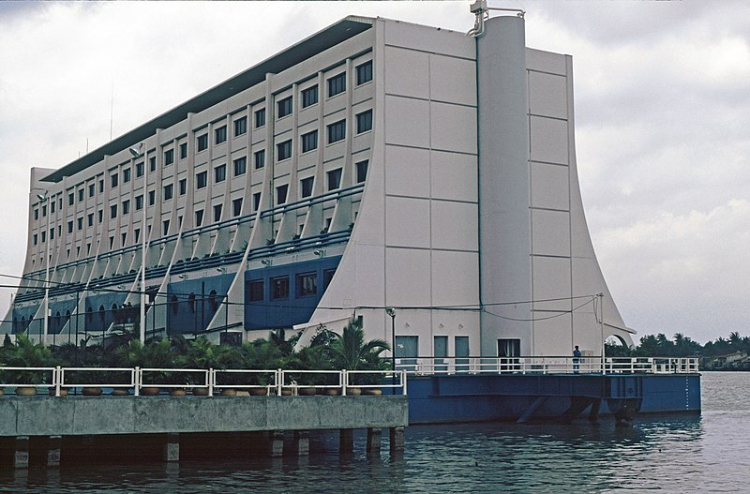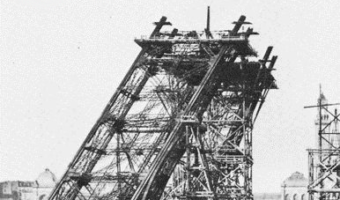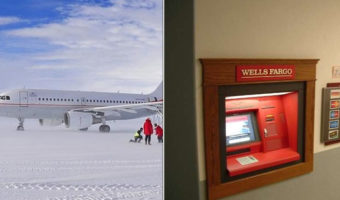What Led the World’s First Floating Hotel to Meet Its Tragic End in North Korea?
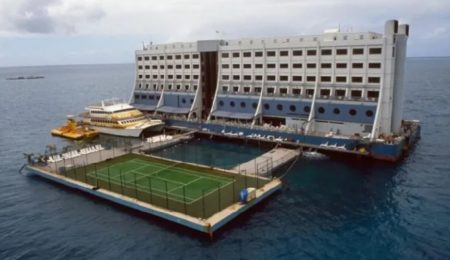
Advancing technology has allowed humanity to expand its civilizations like never before. From the Palm Islands in Dubai to the skyscrapers of Manhattan, humans are building abodes our ancestors couldn’t even imagine. However, this isn’t new. Hotel Haegumgang, the world’s first floating hotel, is clear evidence of how human ingenuity has always pushed the boundaries. Unfortunately, not all innovations have a happy ending, and the bizarre fate of this resort further reaffirms that fact. Let’s look at how this hotel traveled thousands of miles before finally meeting its end in North Korea.
Table of Contents
This Floating Hotel Was Intended to Be a Luxury Getaway on the Waves
John Brewer #FloatingHotel was built in Singapore in 1988 and was planned to be located off the coast of Australia in the Great Barrier Reef as the world’s first floating hotel.
A string of misfortunes and financial issues have led it to Vietnam and subsequently to North Korea, pic.twitter.com/GiNySLs9bb— Syedih (@SyedIHusain) July 9, 2020
The idea for the hotel came from Italian-born entrepreneur and professional diver Doug Tarca. He lived in Townsville, on the northeastern coast of Queensland, Australia, where he ran a ferry business. As a regular visitor to the Great Barrier Reef, Doug loved the sea and everything it offered.
His ferry business frequently transported day-trippers in a catamaran from Townsville to the reef formation. Doug’s idea was to give them a night on waves in style. Thus, his magnum opus was born: the world’s first floating hotel, a luxury resort right above the reef. His initial plan was to moor old cruise ships over the reef permanently, but he found that building a floating hotel would be more economical and environmentally friendly.
Construction began in 1986 at Singapore’s Bethlehem shipyard. The hotel cost an estimated $45 million – over $100 million today – and was transported to the John Brewer Reef, located 43 miles (70 km) offshore from Townsville, within the Great Barrier Reef Marine Park, Australia. Seven anchors arranged strategically to cause minimal damage to the reef kept the newly constructed hotel in place on the waves. The world’s first floating hotel officially opened on March 9, 1988, as the “Four Seasons Barrier Reef Resort.”
However, It Wasn’t All Smooth Sailing for the World’s First Floating Hotel on the Open Seas
Building and operating a luxury hotel in the middle of the ocean comes with its own unique challenges. The most prominent one faced by the guests was getting to the hotel. The only two options were a ferry or an expensive helicopter ride. The residents were also at the mercy of rough seas and bad weather.
The staff lived at the top of the hotel, the floors that experienced the most sway due to the waves. It became a ritual to hang a whiskey bottle with a string; the intensity of its swaying would let the staff know how seasick the guests living below would be when the waves got choppy.
The location also created other hazards and issues that impeded its success. A week prior to opening, a cyclone damaged a freshwater pool beyond repair, limiting the entertainment options for the guests. A World War II ammunition cache discovered two miles from the hotel turned away potential visitors due to safety concerns. Aside from snorkeling and diving, there wasn’t much else to do at the resort, greatly impacting the hotel’s commercial longevity.
Hotel Haegumgang Relocated to North Korea and Demolished in 2022
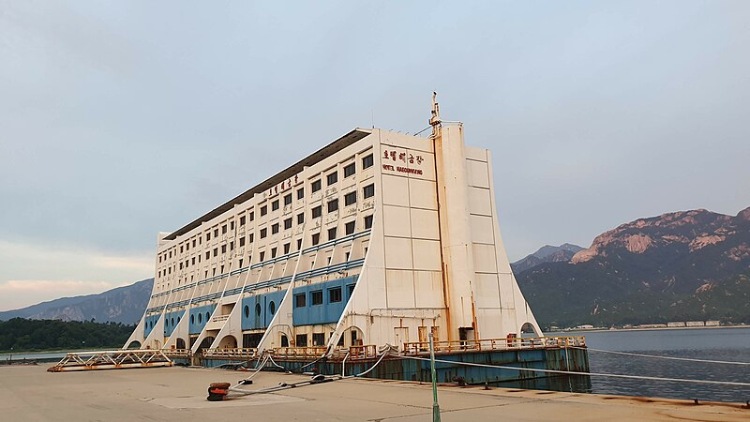
Due to the many challenges faced by the hotel in its initial location, the world’s first floating hotel embarked on a 3,400-mile (5,471.77-km) northward journey in 1989 to Saigon, Vietnam. There, it was renamed “Hotel Saigon” but was commonly referred to as “The Floater.” ” Moored in the Saigon River for over a decade, the establishment witnessed great success. Many cite the better connectivity to the mainland as one of the reasons for its increased guest numbers.
However, its fortunate run came to an end in 1998 as the number of visitors began to dwindle. When all hope seemed lost, and the hotel’s dismantlement seemed likely, an unexpected buyer placed a bid for the establishment: South Korean company Hyundai Asan. Their goal was to attract tourists to Mount Kumgang, a picturesque region near the border of North Korea and South Korea.
So began the hotel’s third and final 2,800-mile (4,506.16-km) journey under the new name “Hotel Haegumgang.” Hyundai Asan, the hotel’s new managing entity, also operated other facilities within the Mount Kumgang region. Hyundai Asan’s direction resulted in the region experiencing a surge in tourist activity. The hotel helped reconcile North and South Korea by functioning as a pivotal point for inter-Korean exchange.
De hecho, a fecha de hoy, el hotel ya solo se usa por turistas chinos, y no demasiados. Según algunos testimonios, el flotel no está teniendo ningún tipo de mantenimiento y el propio Kim Jong-un ha dicho que está "en muy mal estado". pic.twitter.com/xiEBjxn4XT
— Pedro Torrijos (@Pedro_Torrijos) March 4, 2021
However, in 2008, a South Korean woman lost her life in the Mount Kumgang region. It is alleged that the North Korean military was involved in the incident. This caused a suspension of all tours in the area and the shutting down of Hotel Haegumgang. In 2019, North Korean leader Kim Jong-Un visited the Mount Kumgang region and criticized the facilities as being shabby. He ordered the demolition of several facilities in the area, including Hotel Haegeumgang.
While the pandemic postponed its demolition, it was eventually completely destroyed in 2022. The world’s first floating hotel had a rocky and interesting story. There have been no attempts to build another, but Hotel Haegumgang has left its mark on architectural history forevermore.














